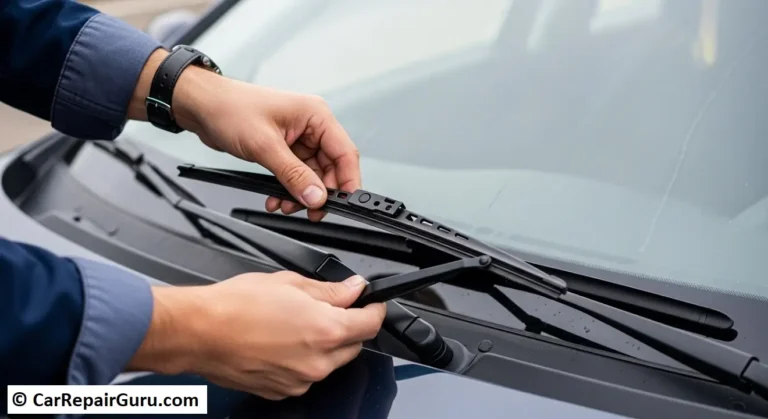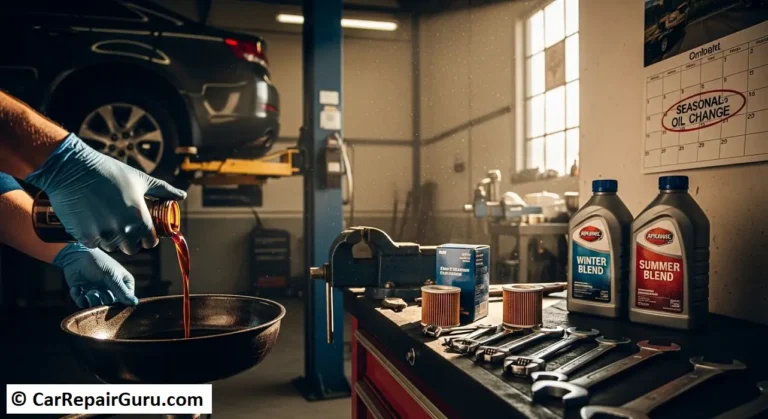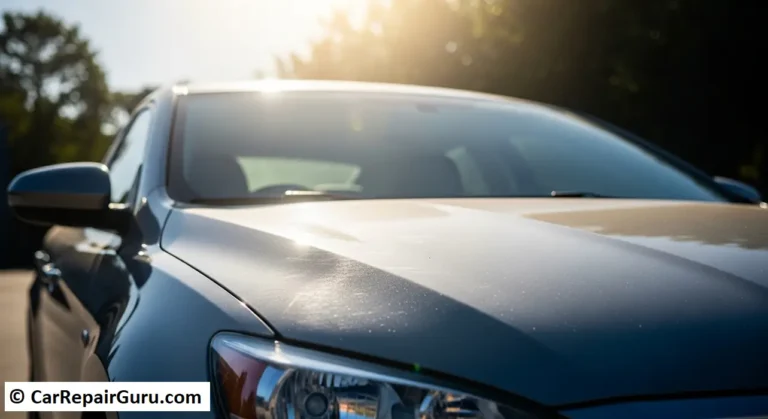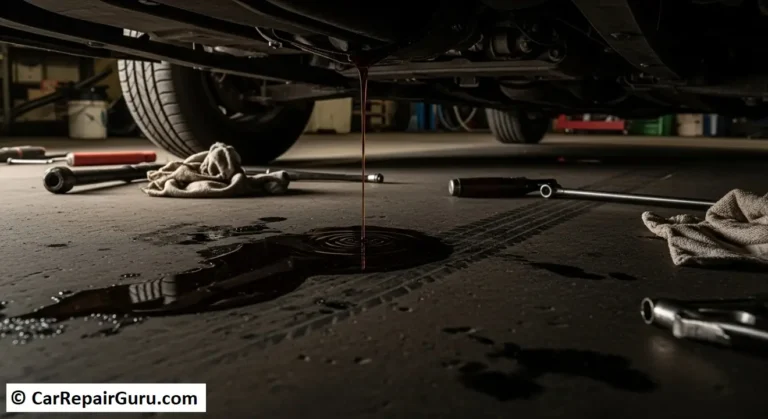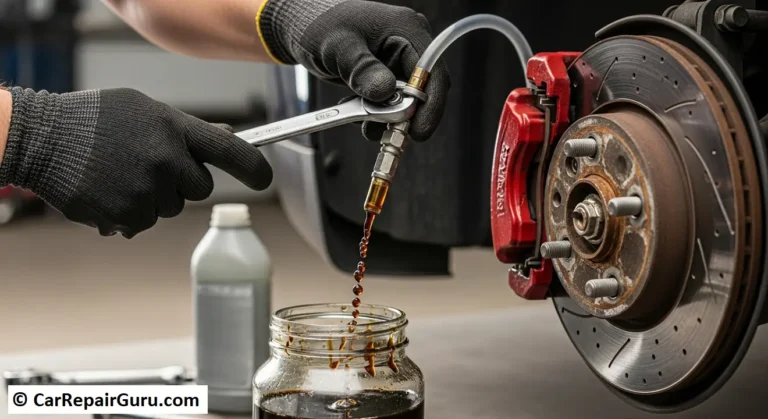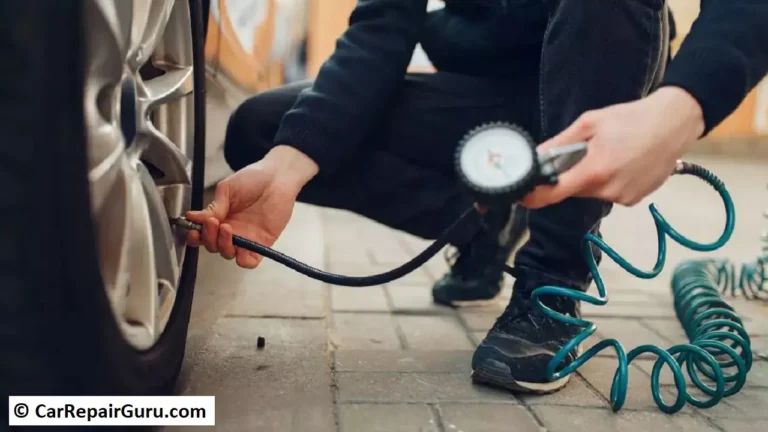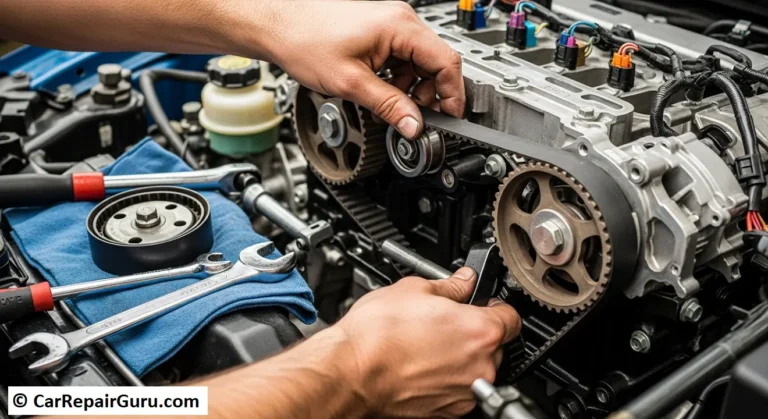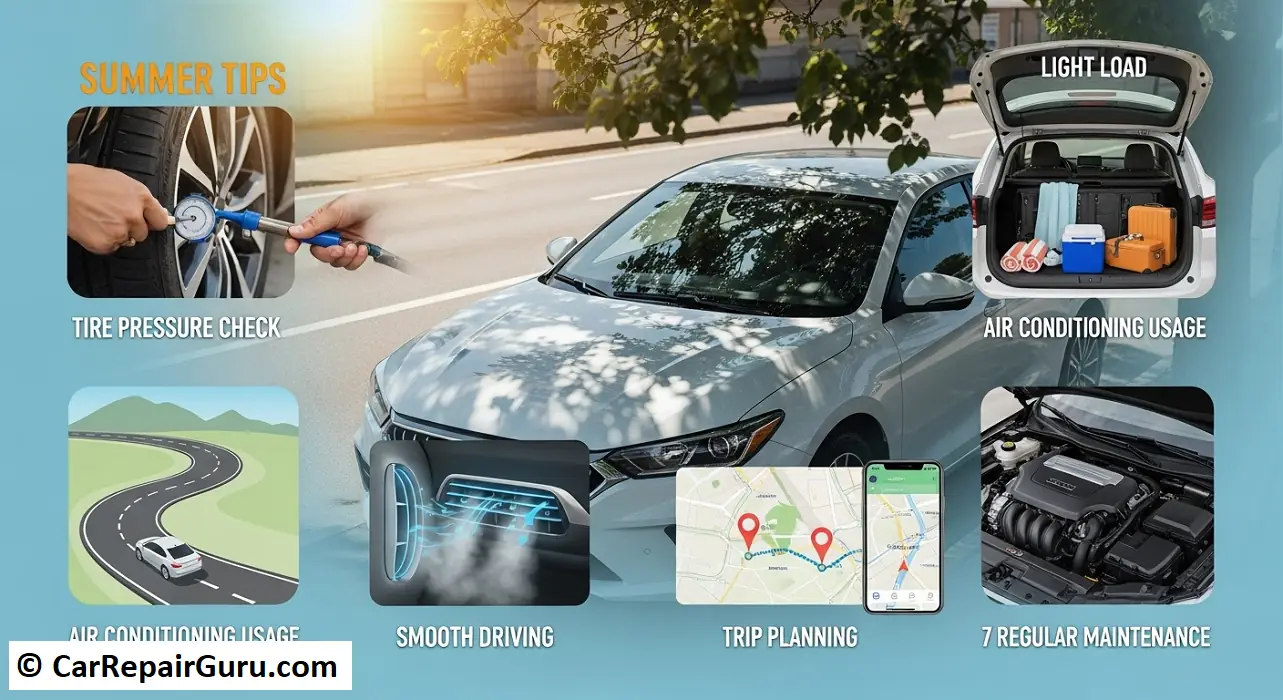
Summer is finally here. The days are longer, the weather is warmer, and the open road is calling your name. But as you plan your beach trips and weekend getaways, you might notice an unwelcome travel companion: a rapidly draining gas tank.
It’s a frustrating paradox. The best driving weather often comes with the worst fuel economy. If you’ve ever felt like you’re visiting the gas station more often between June and August, you’re not imagining it. But don’t resign yourself to high fuel bills just yet.
You have more control than you think. With a few simple tweaks to your habits and a little vehicle TLC, you can fight back against the summer fuel slump. This guide will walk you through everything you need to know to improve your fuel efficiency this summer, save money, and keep your adventures on track.
The Summer Fuel Drain – Why Your Car’s MPG Drops in the Heat
First, let’s understand the enemy. Why does your summer gas mileage seem to plummet when the temperature rises? It’s not just one thing, but a combination of factors working against your fuel tank.
- The A/C Overload: Your car’s air conditioning system is the number one culprit. The A/C compressor runs off the engine’s power, which means every time it cycles on, it puts a direct load on the engine. In extreme heat, this can slash your fuel economy by as much as 25%.
- Increased Traffic: Summer means more people are on vacation, heading to events, or just enjoying the weather. This leads to more traffic congestion, more stop-and-go driving, and more fuel wasted while idling.
- Hotter Air: Hot summer air is less dense than cool air. While the effect is minor, this less-dense air can slightly reduce engine power, prompting you to press the accelerator a bit harder to get the same performance.
- Summer-Blend Gasoline: Fuel refineries change their gasoline formulas for the season. “Summer-blend” gasoline is formulated to evaporate less in hot weather, which is good for the environment, but it also contains slightly less energy content than winter-blend fuel.
The Mechanical Tune-Up – Your Car’s Summer Health Check
Before you even think about your driving habits, the best way to save gas in hot weather starts in your driveway. A well-maintained car is an efficient car. Think of this as setting the foundation for success.
The Tire Pressure Rule – Your Foundation for Efficiency
If you ignore everything else on this list, pay attention to this. Your tires are critical for fuel economy. For every 10°F change in ambient temperature, your tire pressure changes by about 1 PSI (pounds per square inch). As summer heat builds, the pressure in your tires increases.
However, the real enemy is an under-inflated tire. An under-inflated tire has more surface area touching the road, which dramatically increases rolling resistance and forces your engine to work harder.
Your Action Plan: Check your tire pressure in the summer at least once a month, but do it in the morning when the tires are cold. Inflate them to the specific PSI recommended on the sticker inside your driver’s side door jamb—not the maximum pressure listed on the tire sidewall.
Breathe Easy – The Importance of a Clean Air Filter
Try running a marathon while breathing through a straw. That’s what a dirty air filter does to your engine. It restricts the flow of clean air, which is essential for efficient combustion. A clogged filter can hurt your acceleration and seriously damage your fuel economy. Luckily, this is an easy and inexpensive part to check and replace as part of your summer car maintenance.
Use the Right Engine Oil
Engine oil is your car’s lifeblood, and using the right kind matters. Using an oil grade that is thicker than what your manufacturer recommends can increase engine friction, making it work harder and consume more fuel. Check your owner’s manual and stick to the recommended grade.
Outsmart the Heat Before You Drive
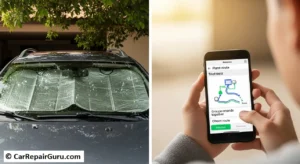
A little forethought can save you a surprising amount of fuel before your key is even in the ignition.
Park Smart – Shade is Your Best Friend
A car left in the direct sun can become an oven on wheels. This forces your A/C to work incredibly hard for the first 10-15 minutes of your drive just to make the cabin tolerable. Whenever possible, park in the shade or in a garage. If you can’t find a shady spot, use a reflective sunshade on your windshield. A cooler car means a less-stressed A/C and instant fuel savings.
Plan Your Route & Combine Your Errands
A warm engine is an efficient engine. Multiple short trips with “cold starts” are fuel-economy killers. Instead of running out for one thing in the morning and another in the afternoon, group your errands into a single, well-planned trip. Use a mapping app to find the most direct routes that avoid traffic, steep hills, and excessive stops.
Managing Your Car’s Load and Gas Tank
What you carry in—and on—your car has a direct impact on your MPG.
Lighten Your Load – Declutter Your Car
It’s simple physics: the heavier your car is, the more energy it takes to move it. For every extra 100 pounds of weight in your vehicle, your fuel economy can drop by about 1%. Take a few minutes to clean out your trunk and cabin. Are those golf clubs, old textbooks, or boxes of donations really necessary for your daily commute?
Ditch the Drag – Remove Exterior Racks
Aerodynamic drag is a silent fuel thief, especially at highway speeds. Roof racks, bike carriers, and cargo boxes—even when empty—disrupt the airflow over your car and can reduce your fuel efficiency by up to 25% on the highway. If you aren’t using them, take them off.
Fueling Up the Smart Way
Even how you buy gas can make a difference. For the best time to buy gas, try fueling up during the coolest parts of the day, like early in the morning or late at night. Gasoline is denser when it’s cool, so you get slightly more fuel for your money. Always tighten your gas cap until it clicks; a loose cap can allow fuel to evaporate into the atmosphere, wasting gas and potentially triggering your “Check Engine” light.
The Driver’s Seat – Eco-Driving Techniques for Hot Weather
How you drive has the biggest day-to-day impact on your fuel consumption. Embracing eco-driving tips can lead to significant savings.
Drive Smoothly, Not Aggressively
If you want to burn fuel, drive like you’re in a Fast & Furious movie. If you want to save it, be smooth. Avoid rapid acceleration and hard, last-minute braking. These actions waste fuel and put unnecessary wear on your car. Instead, anticipate the flow of traffic. Look ahead and coast toward red lights and stop signs.
Obey the Speed Limit (and Save)
Your car’s fuel efficiency peaks around 50 mph and then drops off sharply. According to the U.S. Department of Energy, every 5 mph you drive over 50 mph is like paying an extra $0.25 per gallon for gas. Slowing down from 75 mph to 65 mph can improve your fuel economy by 10-15%.
Use Cruise Control on Flat Terrain
On long, flat stretches of highway, cruise control is your best friend. It keeps your speed steady and avoids the subtle, fuel-wasting accelerations and decelerations we make unconsciously. However, turn it off on hilly terrain, as it can be too aggressive trying to maintain speed up a hill, using more fuel than a gentle foot would.
Mastering Climate Control – The A/C and Fuel Efficiency Dilemma
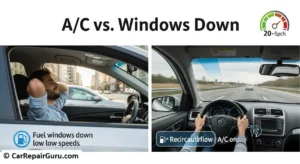
Now for the big one: managing your air conditioner. The debate over car AC fuel consumption is real, but the solution is straightforward once you know the rules.
The Great Debate – A/C vs. Windows Down
Here’s the definitive answer: it depends on your speed.
- At Low Speeds (City Driving, < 45 mph): It is more fuel-efficient to roll down your windows. The A/C compressor puts a heavier load on the engine at lower RPMs.
- At High Speeds (Highway, > 45 mph): Use your A/C. At highway speeds, open windows create significant aerodynamic drag, making your engine work much harder than the A/C compressor would.
Leverage the “Recirculate” Button
This is one of the most underutilized buttons in the car. When you first get in, use the A/C with “fresh air” mode to push the super-heated air out. But once the cabin temperature starts to feel comfortable, switch to the “Recirculate” setting. This allows the A/C to re-cool the already chilled air inside the car, which is far easier and more efficient than constantly cooling hot outside air.
Don’t Pre-Cool with Idle Time
It’s tempting to start your car and let the A/C blast for five minutes before you get in. This does nothing but waste fuel, as idling gets you exactly zero miles per gallon. Modern A/C systems are most effective when you are moving and air is flowing over the condenser. A better method is to open the windows for the first minute of your drive to vent the hot air, then roll them up and let the A/C take over.
Build Better Habits for Year-Round Savings
Beating the summer heat at the pump doesn’t require drastic measures. By focusing on smart maintenance, strategic planning, and mindful driving, you can significantly improve your fuel efficiency this summer.
From checking your tire pressure to being gentle on the accelerator and using your A/C wisely, these small adjustments add up to big savings. These aren’t just summer fixes; they are smart habits that will benefit your wallet and reduce stress on your vehicle all year long.
Implement just one of these tips this week and see the difference. Let us know which one worked best for you in the comments below
Your Summer Fuel Efficiency Questions Answered
Have questions about saving gas when it’s hot? You’re not alone. Here are quick answers to some of the most common queries.
How much fuel does my car’s A/C actually use?
Using your car’s A/C is the biggest summer fuel drain, potentially reducing your fuel economy by up to 25%. The impact is greatest on very hot days and during stop-and-go city driving.
Why is my gas mileage sometimes worse in summer than in winter?
While winter has cold starts, the constant and heavy load from your A/C in summer often consumes more fuel over time. Running the air conditioner for an entire trip is a bigger drain than a few minutes of a rich fuel mixture in winter.
Should my tire pressure be higher or lower in the summer?
Neither. Always inflate your tires to the manufacturer’s recommended PSI found on your door jamb sticker. Check the pressure when tires are cold, as an under-inflated tire is what truly hurts fuel economy.
What is the single most effective way to improve summer fuel efficiency?
Driving smoothly is the most impactful habit you can adopt. Avoiding rapid acceleration and hard braking can improve your mileage by 15-30% and costs nothing to implement.
Do these fuel-saving tips also apply to hybrid and electric vehicles (EVs)?
Yes, these tips directly apply to maximizing your range. For hybrids, the A/C forces the gas engine to run more, while for EVs, climate control and driving style significantly impact battery life.
